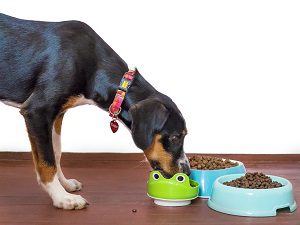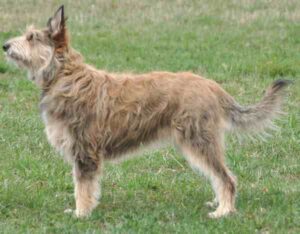The Bulldog is a medium-sized breed of dog which were originally used to drive cattle to market and also to compete in a bloody sport called bullbaiting. Today, the breed is a gentle companion who loves kids. It is also known as British Bulldog and English Bulldog.
Historical evidence suggests that the Bulldogs were created in 13th Century in England, during the reign of King John, for the ‘sport’ of bullbaiting. In bullbaiting a staked bull fought a pack of dogs while spectators bet on the outcome.
The dogs used in this grisly pastime, the ancestors of today’s Bulldog, were ferocious brutes with huge jaws, unbelievably brave and seemingly impervious to pain.
A turning point in the history of this breed came in 1835, when England banned blood sports with animals. Blood sports went underground, literally, as bullbaiting gave way to pit-dog fighting in cellars.
This illicit activity required quicker, more animated dogs than the plodding Bulldog of the early 19th century. Gamblers created their fiery, four-legged gladiators by crossing various terriers with Bulldogs, and in so doing put forth early prototypes of the Bull Terrier, Staffordshire Bull Terrier, and other bull-type terrier breeds still popular today.
The Bulldog faced extinction, with bullbaiting obsolete. In response, Bulldog admirers began the long process of transforming the breed from brawler to companion. They refined the physical contours to make the dog more attractive, and they also tamped down the Bulldog’s ferociousness and reconceived the breed as a sweet and mellow pet who is especially fond of children.
The Bulldog has long since been the national symbol of England. During World War II much was made of the similarities between the jowly, tenacious Bulldog and the jowly, tenacious Prime Minister Winston Churchill.
In America, the breed is the mascot of myriad sports team, including those representing Yale University. Yale’s Bulldog mascot, Handsome Dan, was said to be the first animal mascot in all of sports. Another famous Bulldog football mascot is Uga, who enjoys the exploits of the University of Georgia Bulldogs from the comfort of an air-conditioned doghouse on the sidelines. The Bulldog also serves as the wrinkly face of the Mack Truck company and the U.S. Marine Corps.[1]
The Kennel Club (UK), the American Kennel Club (US), and the United Kennel Club (US) oversee breeding records. Bulldogs are popular pets; they were the fifth most popular purebreed in the US in 2017 according to the American Kennel Club[2]
Bulldog Characteristics
The Bulldog is a muscular, hefty dog with a wrinkled face and a distinctive pushed-in nose. They have characteristically wide heads and shoulders along with a pronounced mandibular prognathism.
There are generally thick folds of skin on the brow; round, black, wide-set eyes; a short muzzle with characteristic folds called rope or nose roll above the nose; hanging skin under the neck; dropping lips and pointed teeth, and an underbite with an upturned jaw.
The coat of these dogs is short, flat, and sleek with colors of red, fawn, white, brindle, and piebald.
The Bulldogs are one of the few breeds whose tail is naturally short and either straight, screwed or thin and thus is not cut or docked as with some other breeds.
In the United Kingdom, the breed standards are 55 lb (25 kg) for a male and 50 lb (23 kg) for a female. In the United States, a typical mature male weighs 50 lb (23 kg), while mature females weigh about 40 lb (18 kg).[6] The Bulldog Club of America recommends the average weight of a bulldog to be 40–50 lb (18–23 kg).

Temperament
The Bulldogs are sociable and sweet, but with a reputation for courage that makes the breed an excellent watchdog. It is actually a lover, not a fighter. It is dignified rather than lively and has a kind, although occasionally stubborn nature.
These dogs are friendly and easygoing, and get along with everyone. They can be a slow learner, but once they know something, they got it for good. They don’t tend to be barkers.
Although, temperament of the dogs is affected by a number of factors, including heredity, training, and socialization. The puppy with nice temperaments is curious and playful, willing to approach people and be held by them.
Like many other dogs, the Bulldogs also need early socialization. Exposure to many different people, sights, sounds and experiences are great ways for socializing them, especially when they are young.
Lifespan
Average lifespan of the Bulldogs is between 8 and 12 years.
Feeding
How much a mature dog eats depends on it’s size, age, build, metabolism and activity level. Dogs are individuals, just like people, and they don’t all need the same amount of food.
The Bulldogs are medium sized breed and moderately active. So, their diet should be formulated for a medium sized breed with average exercise needs. Generally 1/2 to 2 cups of high-quality dog food daily will be enough for them. Although, you can consult with a vet in your area for better feeding recommendations.
Caring
Taking good care of the animals is very important for raising Bulldogs. They are inactive indoors, and generally don’t require a great deal of exercise. Although, they must be walked everyday to keep them from gaining weight.
They are actually indoor dogs, and prefer a relaxed lifestyle. They are ready for a nap, after about 15 minutes of play. This low to moderate energy level makes the breed suited to any type home, from apartment to a house with yard.
You can take your dog for a walk of a mile or two during the cool part of the day, but they will be just happy with a brief stroll up and down your street.
Because of their pushed-in face, Bulldogs don’t do well in extremely hot or cold weather. They breathe heavily when they’re hot and don’t dissipate heat well.
The Bulldog is unlikely to be an obedience-trial star, but once he learns something, he never forgets it. He learns best through fun training sessions that involve repetition and positive reinforcement through food rewards and praise.
Health
The Bulldogs are generally healthy. But like all other dog breeds, they are also prone to certain health conditions.
Their common health problems include eye problems, brachycephalic syndrome, head shakes, demodicosis, hip dysplasia and patellar luxation. Always try to keep good contact with a vet in your area.
| Breed Name | Bulldog |
| Other Names | Also known as British Bulldog and English Bulldog |
| Breed Size | Medium |
| Height | Between 12 and 25 inches at the withers |
| Weight | Between 18 and 23 kg |
| Good as pets | Yes |
| Climate Tolerance | All climates |
| Color | Red, fawn, white, brindle, and piebald |
| Lifespan | Between 8 and 12 years |
| Good for children | Yes |
| Rarity | Common |
| Country of Origin | England |






